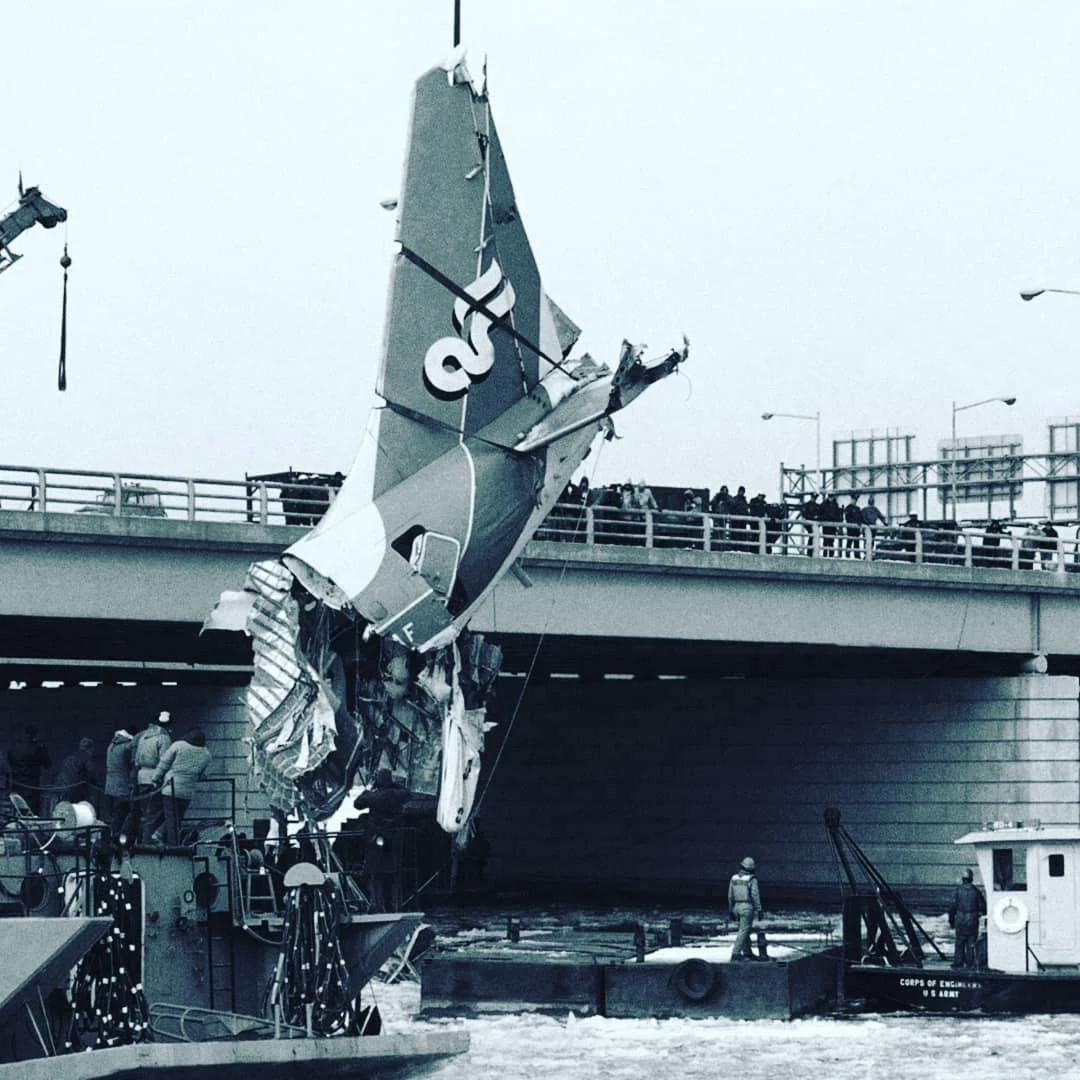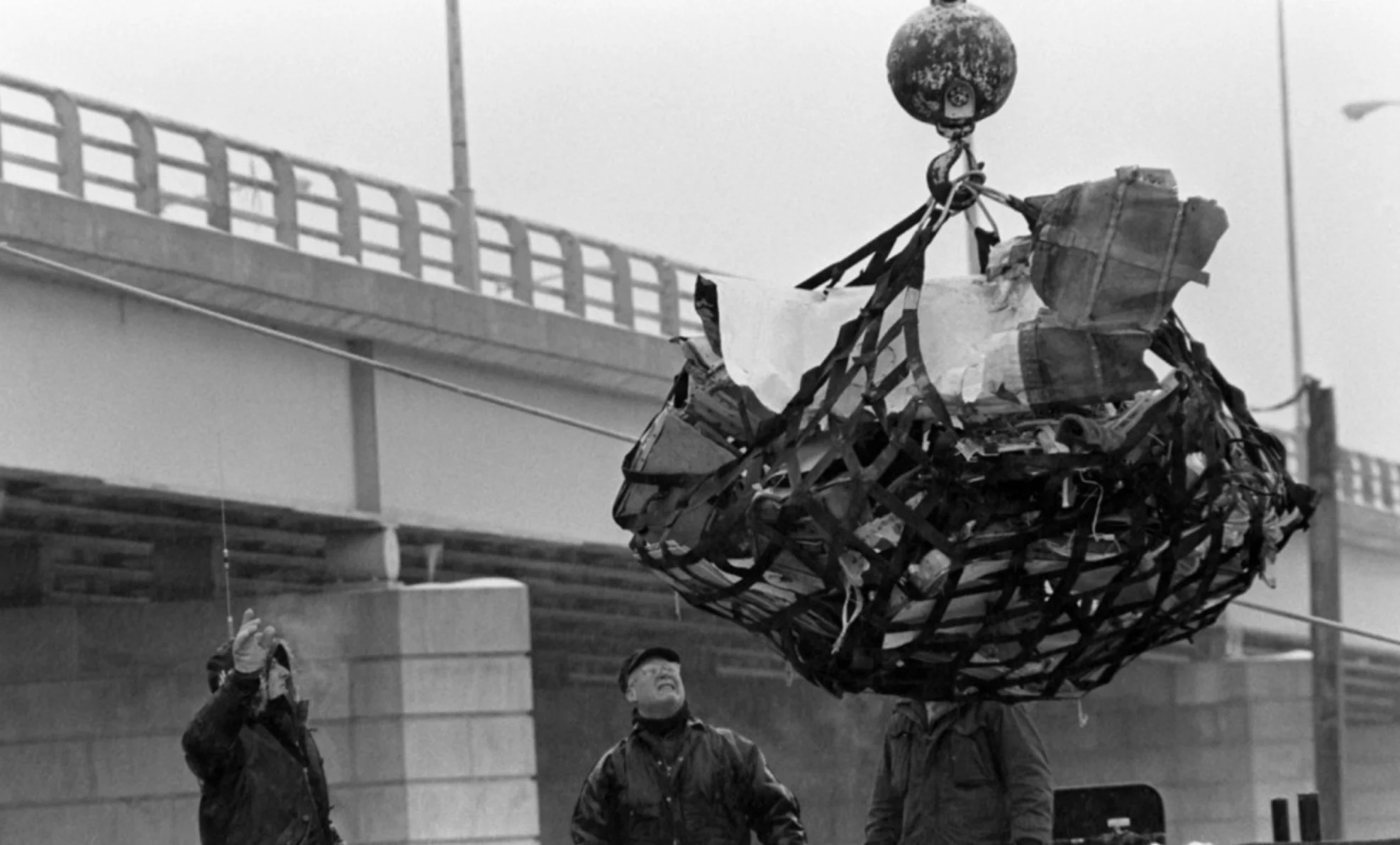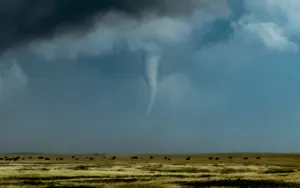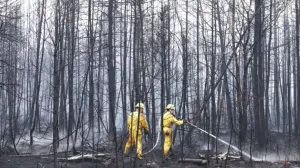
The cascade of negligence that led to the 1982 Air Florida Flight 90 crash
This Day In Weather History is a daily podcast by Chris Mei from The Weather Network, featuring stories about people, communities and events and how weather impacted them.
--
Let's start with this image:

Recovery of Air Florida Flight 90. Courtest Wikipedia
This is the Air Florida 90 after around two minutes of flight. On January 13, 1982, a series of human errors led to a completely avoidable tragedy.
Air Florida Flight 90 was headed from Washington National Airport to Fort Lauderdale–Hollywood International Airport with a stopover at Tampa International Airport.
Around two minutes after takeoff, the Boeing 737-222, registered as N62AF, crashed into the 14th Street Bridge over the Potomac River. These are the errors and timeline of that flight.

Diagram the Air Florida Flight 90 flight path. Courtesy of Wikipedia
The aircraft had arrived from Miami, FL, at 1:29 pm. The airport was closed from 1:38 pm to 2:53 pm because of snowfall.
At around 2:20 pm, the maintenance team started to de-ice the plane because the captain wanted to get in line for departure once the airport re-opened. The captain called off the de-icing after receiving notice that operations were going to be delayed longer.
The de-icing resumed between 2:45 and 2:50. American Airlines crew de-iced the plane. American Airlines has an agreement with Air Florida that covers and plugs need to be used over engines and airframe openings during de-icing. The crew did not use the covers or plugs.
The two sides of the plane were de-iced with different de-icing mixture percentages. And the mixture dispenses was different from what it was labelled (18 per cent actual vs. 30 per cent selected).
The operators of the de-icing mixture had no way of knowing the accuracy of the fluid being dispensed as an incorrect nozzle was installed, one without a "mix monitor."
When the plane tried to depart from the gate, the combination of ice, snow, and glycol on the ramp prevented the tug from moving the aircraft. The flight crew used reverse thrust (which goes against flight manual guidance) to try to move from the ramp.
The plane started to taxi to runway 36 at 3:38 pm.
The crew taxied the aircraft to the line for takeoff, strategically positioning the plane near the exhaust of another plane to continue the de-icing process. To re-phrase and repeat, because it seems so unbelievable, the Air Florida 90 crew tried to use the heat emitted from another plane to remove the ice from their aircraft.
Neither pilot had a lot of experience flying in snowy or cold weather.
The captain (CAM-1) and the first officer (CAM-2) ran through the takeoff checklist. This is a snippet of conversation that was recorded:
CAM-2 Pitot heat?
CAM-1 On.
CAM-2 Engine anti-ice?
CAM-1 Off.
They received clearance for takeoff at 3:58 pm. The aircraft wasn't accelerating at a normal pace, requiring 45 seconds and about 5,400 feet of runway for takeoff, which should only take 30 seconds and around 3,400 feet.
Here's another bit of recorded conversation from the cockpit (during takeoff):
15:59:51 CAM-1 It's spooled. Really cold here, real cold.
15:59:58 CAM-2 God, look at that thing. That don't seem right, does it? Ah, that's not right.
16:00:09 CAM-1 Yes it is, there's eighty.
16:00:10 CAM-2 Naw, I don't think that's right. Ah, maybe it is.
16:00:21 CAM-1 Hundred and twenty.
16:00:23 CAM-2 I don't know.
The plane started to climb but failed to accelerate. The stall warning stick shaker activated. The captain and first officer are recorded saying:
16:00:45 CAM-1 Forward, forward, easy. We only want five hundred.
16:00:48 CAM-1 Come on forward....forward, just barely climb.
16:00:59 CAM-1 Stalling, we're falling!
16:01:00 CAM-2 Larry, we're going down, Larry...
16:01:01 CAM-1 I know!
16:01:01 SOUND OF IMPACT
At around 4:01 pm, the aircraft hit the heavily congested 14th Street Bridge before tearing away a 41-foot section of the bridge and landing in the iced-over Potomac River. The plane struck seven vehicles on the bridge.
The plane was carrying 74 passengers and five crew members. Four passengers and one flight attendant survived. Four motorists on the bridge also died.

A crane lifting wreckage from Flight 90. Courtesy of Wikipedia
The National Transportation Safety Board (NTSB) reported that the cause of the crash was pilot error. The pilots didn't switch on the engines' internal ice protection systems, they irresponsibly used reverse thrust, they attempted to use the jet exhaust from another plane to melt their plane's ice, continued to see ice and snow buildup on their wings, and failed to abort the flight after detecting a power problem.
The survivors of the crash were rescued from Potomac River by civilians and emergency personnel. President Ronald Reagan commended these people a few days later during a State of the Union speech.
Subscribe to 'This Day in Weather History': Apple Podcasts | Amazon Alexa | Google Assistant | Spotify | Google Podcasts | iHeartRadio | Overcast'
Thumbnail courtesy of Wikipedia









